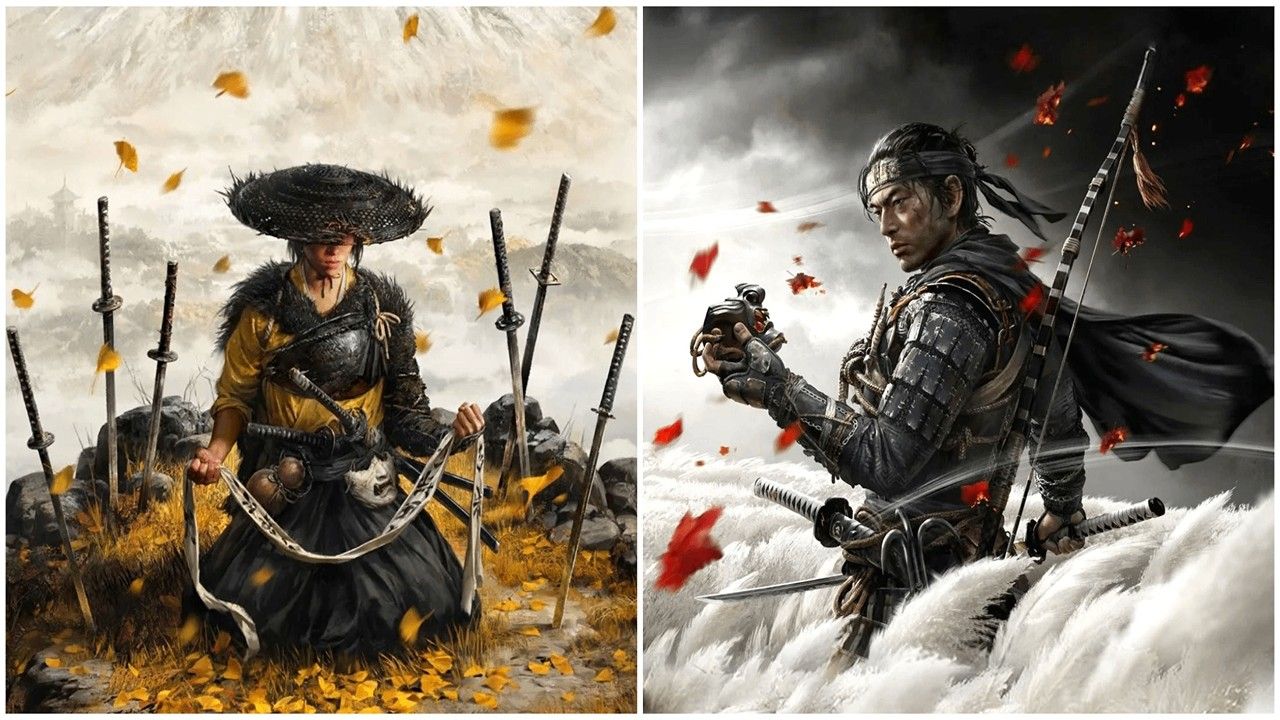Protagonist: Atsu vs. Jin Sakai
Ghost of Tsushima centered on Jin Sakai, a samurai nobleman navigating the moral tension between honor and survival during the Mongol invasion. His transformation into the "Ghost" symbolized a fall from traditional values in service of a higher cause.
In contrast, Ghost of Yōtei introduces Atsu, a rōnin consumed by revenge after the brutal murder of her family by a gang called the Yōtei Six. Set in 1603, her journey is deeply personal and far more detached from duty or honor. Atsu is driven by grief and survival, not the weight of legacy.
This marks a thematic shift from Tsushima’s exploration of conflicted heroism to Yōtei’s raw emotional narrative—less about sacrifice, more about fury.
Setting: Mount Yōtei vs. Tsushima Island
Tsushima’s island offered players a lush, sun-drenched landscape with bamboo forests, golden fields, and misty shrines. Its beauty was often used to contrast the devastation of war, creating a striking visual tone.
Ghost of Yōtei, however, relocates players to the northern frontier of Ezo (modern-day Hokkaido), around the volcanic Mount Yōtei. The landscape is colder, wilder, and more treacherous—defined by snowstorms, steep cliffs, and survivalist conditions.
This change in setting introduces environmental hazards and traversal mechanics not seen in the original, emphasizing nature’s indifference and the protagonist’s isolation.
Combat: Refined Stances vs. Diverse Arsenal
Combat in Ghost of Tsushima was defined by elegance—players used a katana and shifted between four stances to counter enemy types, supported by stealth tools and the bow.
In Ghost of Yōtei, combat becomes more varied and adaptive. Players can wield:
- Ōdachi for sweeping, heavy attacks
- Kusarigama for agile, stealth-linked combos
- Tanegashima firearms for ranged power
- Dual katanas for fast-paced, aggressive melee
The expanded arsenal offers greater combat diversity and encourages players to define their own style, making encounters less scripted and more strategic than Tsushima's structured stance system.
Structure: Non-Linear Progression vs. Act-Based Campaign
Tsushima followed a three-act narrative structure that guided players from one region to the next in a linear fashion, albeit with freedom to explore and take on side quests.
Ghost of Yōtei breaks this mold entirely, offering a non-linear structure in which players choose the order of hunting down the Yōtei Six. Player choices not only influence how the story unfolds, but also determine character relationships and the ending.
This evolution in structure gives players more narrative agency, transforming the experience into something more akin to an RPG than a traditional open-world action game.
Technical Design: PS5 Native vs. PS4 Legacy
Ghost of Tsushima was originally designed for the PlayStation 4, with its PS5 enhancements adding improved frame rates and load times but remaining fundamentally rooted in last-gen design.
Ghost of Yōtei is built from the ground up for the PlayStation 5, featuring:
- 60 FPS with ray tracing
- Real-time weather tied to story and combat
- Advanced enemy AI and destructible environments
- Instant load transitions across vast regions
This technical leap makes Yōtei not just more beautiful, but also more responsive and immersive, bringing cinematic fluidity to every duel and exploration segment.
Cultural Focus: Southern Japan vs. Northern Frontier
Sucker Punch’s dedication to cultural authenticity remains intact, but the focus has shifted. Tsushima drew from the island's Shinto shrines, Mongol war tactics, and southern Japanese aesthetics.
In contrast, Ghost of Yōtei embraces northern Japanese culture, with Ainu influences, volcanic mythology, and harsher terrain. Developers reportedly traveled to Hokkaido’s Shiretoko Peninsula to capture authentic environmental sounds and textures.
This new cultural lens offers a refreshing perspective on Japanese history rarely explored in games, adding depth and distinction from the first title.
Ghost of Yōtei doesn't seek to repeat Ghost of Tsushima—it aims to evolve it. From a more emotionally driven protagonist to a wild, untamed setting, and a combat system offering greater freedom, the differences reflect a studio pushing boundaries rather than resting on past success.
For fans of Tsushima, this spiritual sequel presents both a return to familiar elegance and a bold departure into uncharted territory.
